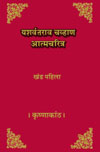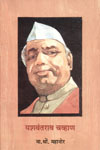Statewide Integrated Grid
5. The fundamental problem that faces the State of Maharashtra is to develop industries in rural areas as will lead to the full utilisation of locally available resources in capital and raw materials and others in which skill and labour account for a substantial part of cost production, so that employment opportunities for surplus working population will be created. Thus the pattern of economy of Maharashtra has to be Agro-industrial. But this is not an easy task. First and foremost, the basic factor for the development of such an economy is the availability of reasonably cheap electric power in rural areas. In the Maharashtra State, although the production and industrial consumption of electricity is the highest in India, there is no integrated grid system, with the result that there is a wide variation in the unit charge of power supply and consequently a concentration of industrial development in localities where the same is available at a cheap rate. As a step, therefore, towards the development of agro-industrial economy, an integrated power grid system will have to be developed, if not all at once, by stages. It will on the one hand reduce the necessity of maintaining idle stand-by capacity to its minimum and to the extent practicable equalise the tariffs. Once power is taken to the villages it will generate industrial activity. The State Government proposes to spend Rs. 82 crores for augmenting the power supply during the Third Five-Year Plan. But even so, it will partially cover the rural areas.
Decentralisation of Industries
6. Development of industries in rural areas means decentralisation of industries. Decentralisation is two-fold; one of location and the other of capital. Such decentralisation helps attainment of two of the principal tasks to which the Planners have attached importance. Decentralisation of location would help creation of opportunities of employment in new areas and that of capital, economic power. The number of large-scale units is indeed small. It is the medium, and more so, small-scale units that very much outnumber the big units, say those employing more than a hundred workers, even in highly industrialised countries. The type of industries that could be developed in the rural areas are generally small-scale, to some extent medium and few large-scale ones.
























